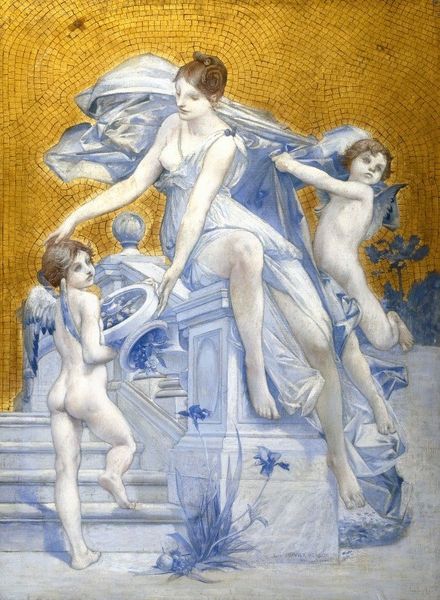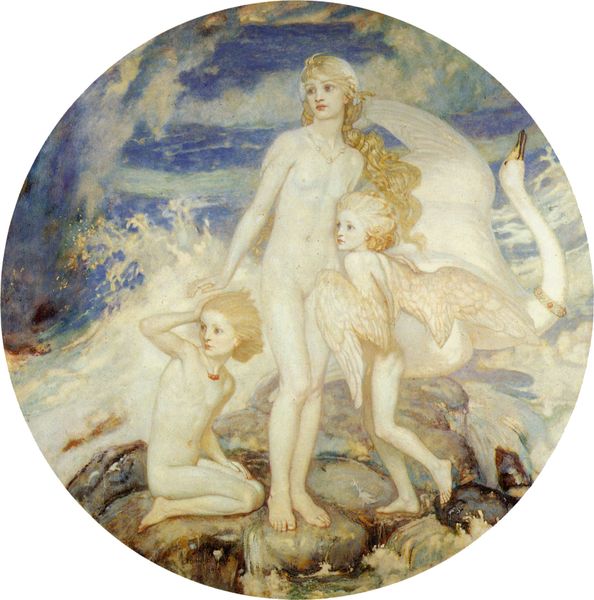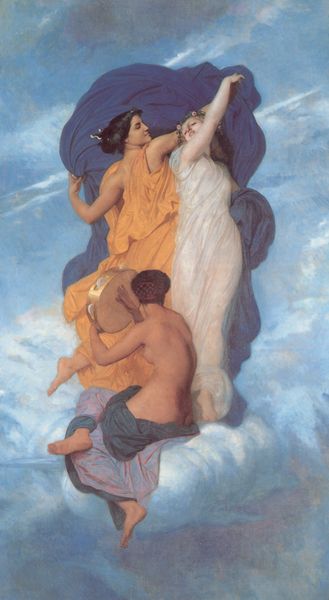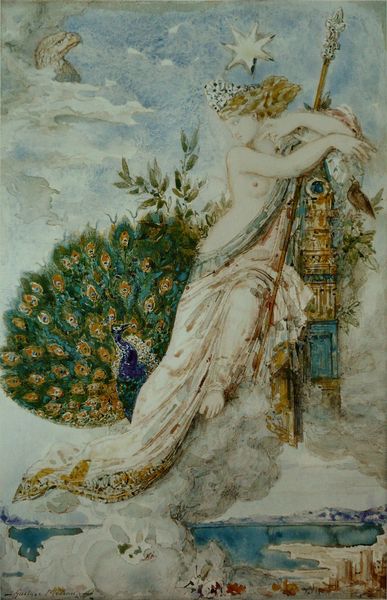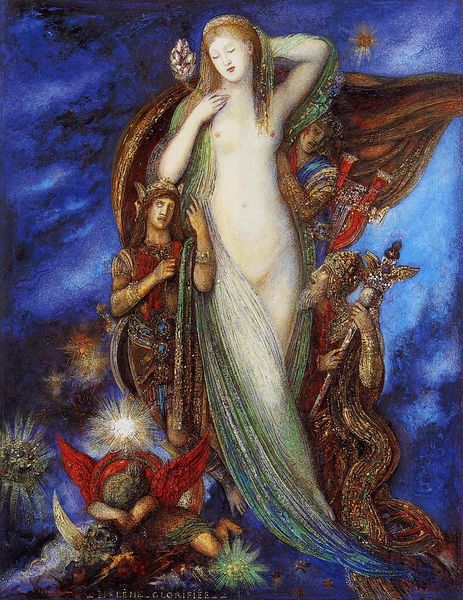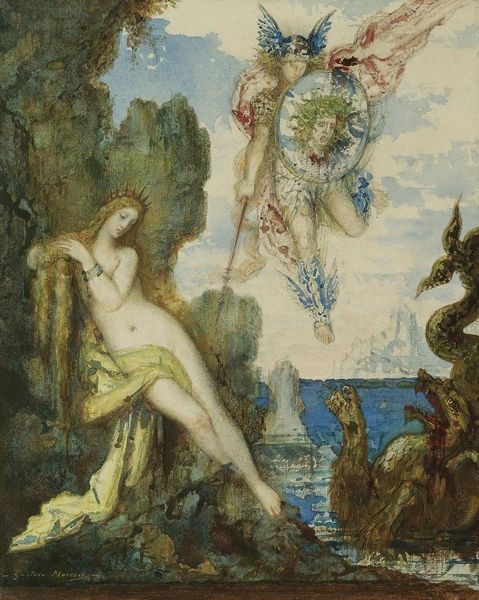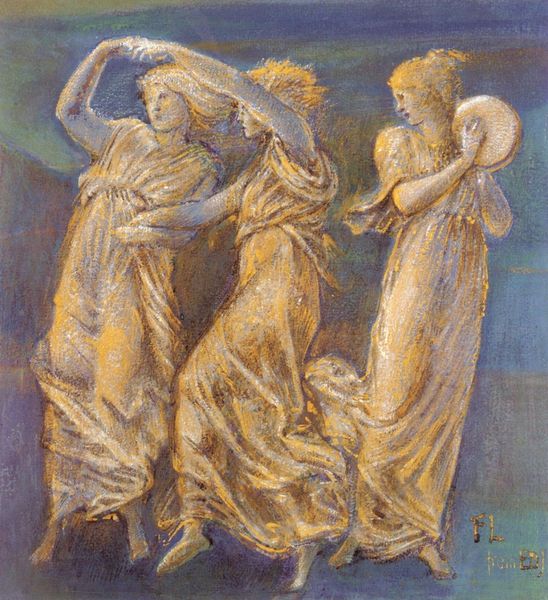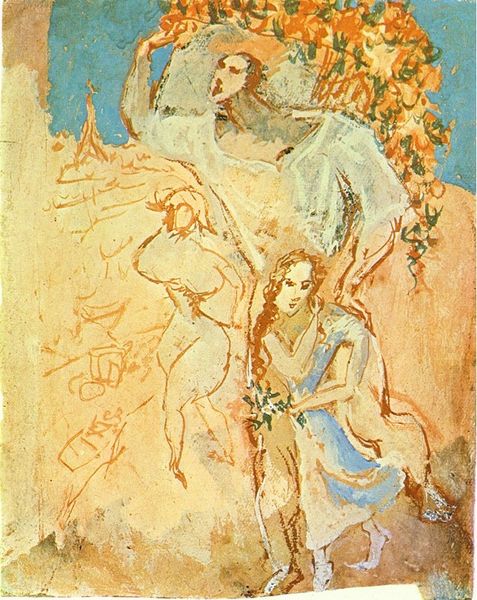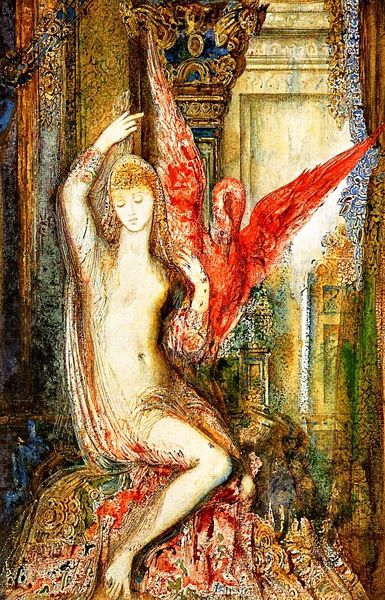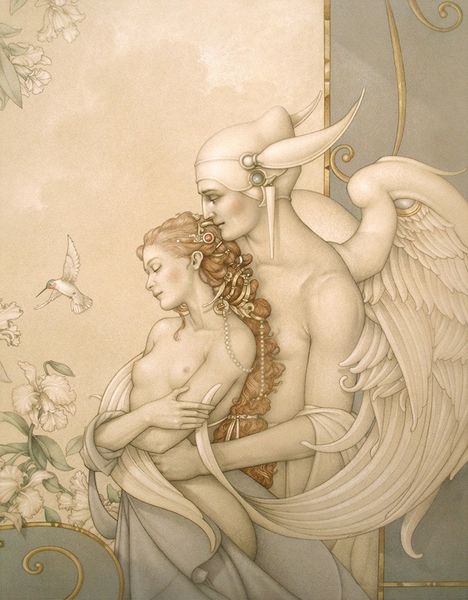
painting, oil-paint
#
portrait
#
allegory
#
painting
#
oil-paint
#
landscape
#
figuration
#
oil painting
#
mythology
#
symbolism
#
history-painting
Copyright: Public Domain: Artvee
Luc-Olivier Merson painted this allegory of time in the late nineteenth or early twentieth century. It depicts a female figure, a representation of time itself, flanked by two cherubic figures, likely symbolizing the past and future. Made in France, this work draws heavily from the visual language of classical antiquity, which was a common practice in French academic painting of the era. The gold background reminiscent of a mosaic evokes byzantine religious imagery, while the figures themselves are rendered in a neoclassical style, emphasizing idealized forms and restrained emotion. This fusion of classical and religious motifs was a familiar approach in the French academy. Merson also makes reference to the 'Vanitas' tradition through his inclusion of the hour glass, reminding us of the transient nature of life. If we are to understand the relationship between the past, the present and the future, how do we go about it? Perhaps by researching the collections of the Louvre or the documents of the Académie des Beaux-Arts.
Comments
No comments
Be the first to comment and join the conversation on the ultimate creative platform.
